Stalls, stops and breakdowns: Problems plague push for electric buses
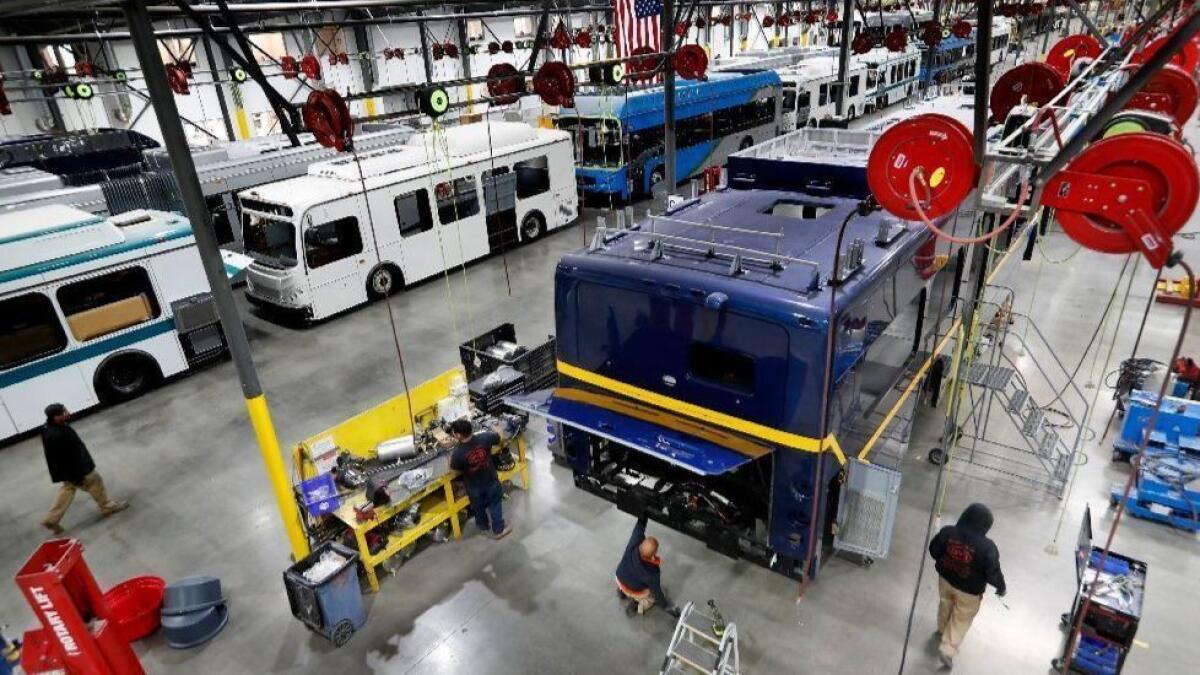
When Chinese battery maker BYD Ltd. approached Southern California officials in 2008 touting ambitious plans to build electric cars, local politicians jumped at the promise of thousands of jobs and cleaner air.
In the nine years since, agencies have awarded BYD grants, subsidies and public contracts worth more than $330 million for its battery-powered buses, forklifts and trucks. The company is positioned to be a prime supplier of electric buses to the nation’s second-largest system, as Los Angeles’ Metro sets a 12-year deadline to abandon fossil fuels.
But largely unbeknownst to the public, BYD’s electric buses are contending with a record of poor performance and mechanical problems.
A Times investigation found its buses stalled on hills, required service calls much more frequently than older buses and had unpredictable driving ranges below advertised distances, which were impaired by the heat, the cold or the way drivers braked.
A federal testing center and transit agencies across the country logged driving ranges that were dozens of miles short of company claims, limiting the routes they can handle and requiring passengers to shuffle onto replacement buses when the batteries go low.
The first five buses BYD sent to Los Angeles Metro were pulled off the road after less than five months of service. Internal emails and other agency records show that agency staff called them “unsuitable,” poorly made and unreliable for more than 100 miles. Despite strong concerns from its own staff about the quality and reliability of the company’s vehicles, the transit agency awarded BYD tens of millions of dollars more in public contracts.
BYD’s expansion underscores a major shift at public transit agencies in California and around the country as officials try to reduce pollution and comply with climate change goals by investing taxpayer dollars into electric vehicle technology even as it develops. BYD has won passionate support from some of the region’s most powerful politicians.
Thousands of pages of public records and interviews with those dealing directly with the company show BYD to be a skilled political operator. The company’s business model involves hiring lobbyists and grant writers to secure no-bid purchases by public agencies, and it has invited public officials on foreign junkets and employed their close associates. Those officials then repeatedly came to the company’s defense as concerns about the buses heightened.
BYD’s backers hail electric buses as a clean-burning answer to the belching municipal rigs of the past and the natural gas models that followed. In the onset of this conversion, BYD — and, to an extent, the rest of the electric bus industry — has struggled to make buses that run as reliably and cheaply as the fleets they seek to replace.
Some transit officials say problems are to be expected as new technology makes its debut on busy city routes, and that environmental benefits are worth the gamble. But critics, including some within the Metro staff, are alarmed by BYD’s track record and have questioned further massive public investment in the company.
BYD executives rebutted reports of poor performance and recurring mechanical problems, contending the company has received overwhelmingly positive feedback from transit districts. However, government emails and bus inspection records show that multiple agencies have confronted the company on quality and range issues. BYD executives blamed those issues on outside forces, including drivers braking too hard, a negative publicity campaign by labor activists pushing to unionize BYD employees and transit managers they say are insufficiently committed to switching to electric. They maintained that the company should be lauded for providing an important public service.
“If you want to find the problem for the new technology, you always can try to,” said Stella Li, president of U.S.-based BYD Motors Inc. “If you want success,” she said, “everything is positive.”
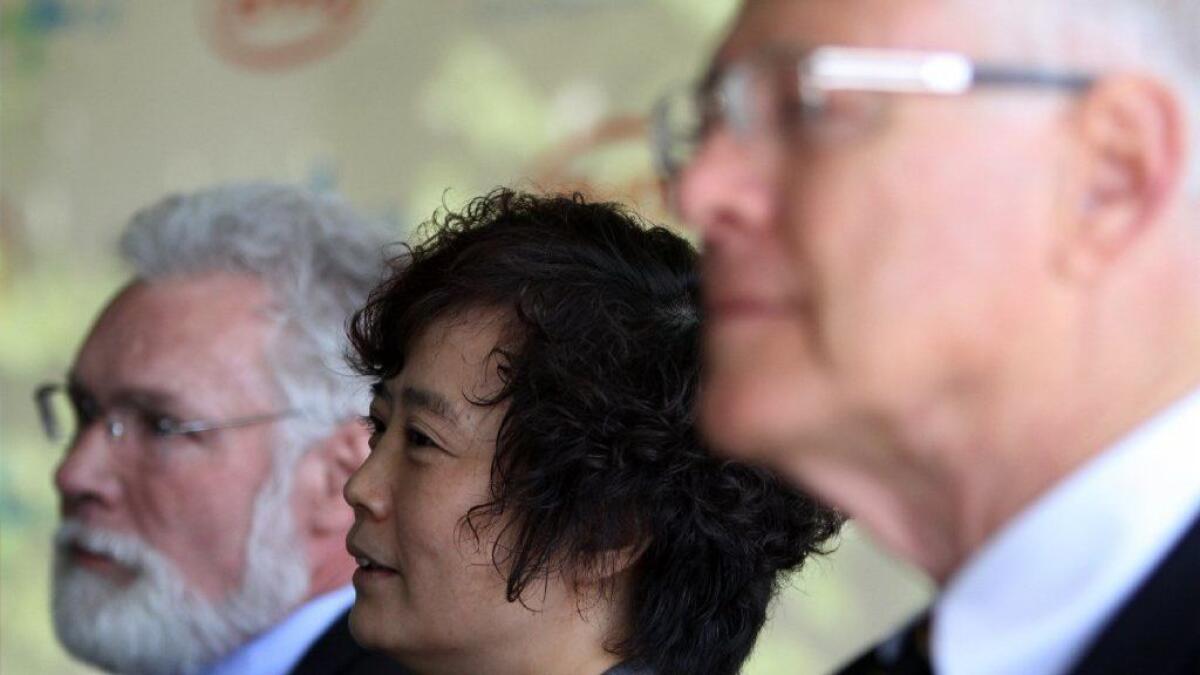
Born of necessity and political connections
The deep bond between Los Angeles and BYD, built on the promise of jobs, began at a cocktail reception in Tianjin, China, in September 2008.
Christine Antonovich, wife of then-Los Angeles County Supervisor Mike Antonovich, accompanied a Los Angeles delegation to a business forum where her husband was a guest speaker. It was there that regional business promoter Bill Allen said Christine Antonovich pulled him aside to meet an executive from a Chinese company looking to invest in the U.S.
BYD was then a cellphone battery supplier with an automotive branch churning out cheap gas cars. Its chairman boasted of plans to dominate world auto sales by 2025, a claim made more credible by the news that came days before that billionaire investor Warren Buffett bought a 10% stake in the Chinese company. Buffett, still a major stockholder, said publicly the draw was BYD’s electric vehicle plans.
Following the meeting, Allen’s nonprofit Los Angeles County Economic Development Corp. began to woo what business development pitches described as a 2,000-worker car assembly plant for BYD.
The Antonovich team would prove key to BYD’s decision to narrow its choice to Los Angeles County, opening headquarters in downtown L.A. in exchange for an $8-million incentive package and an assembly plant in Lancaster in return for the desert town’s $1.45-million enticement.
Christine Antonovich, a former Chinese actress who sidelined as a business consultant, shepherded Lancaster officials through private dinners and trips to China to meet with BYD executives. She declined repeated requests to discuss her role with BYD, but her husband said she received no compensation for her work on the company’s behalf.
Mike Antonovich was chairman of Metro, the nation’s second-largest bus transit system. He presided on a government board steering Metro’s use of electric buses and sat on the regional air quality board that doled out state grants for which BYD would apply.
State ethics filings show that in 2009 and 2010, Mike Antonovich held BYD stock valued at less than $10,000. At the same time, Christine Antonovich counseled BYD, and city emails show that her husband’s county staff scouted business locations for the company. The stock no longer appeared on his financial disclosure form the next year when Antonovich and then-Los Angeles Mayor Antonio Villaraigosa co-sponsored a $30-million Metro project to test new bus technology. Almost all of that money would be awarded to BYD.
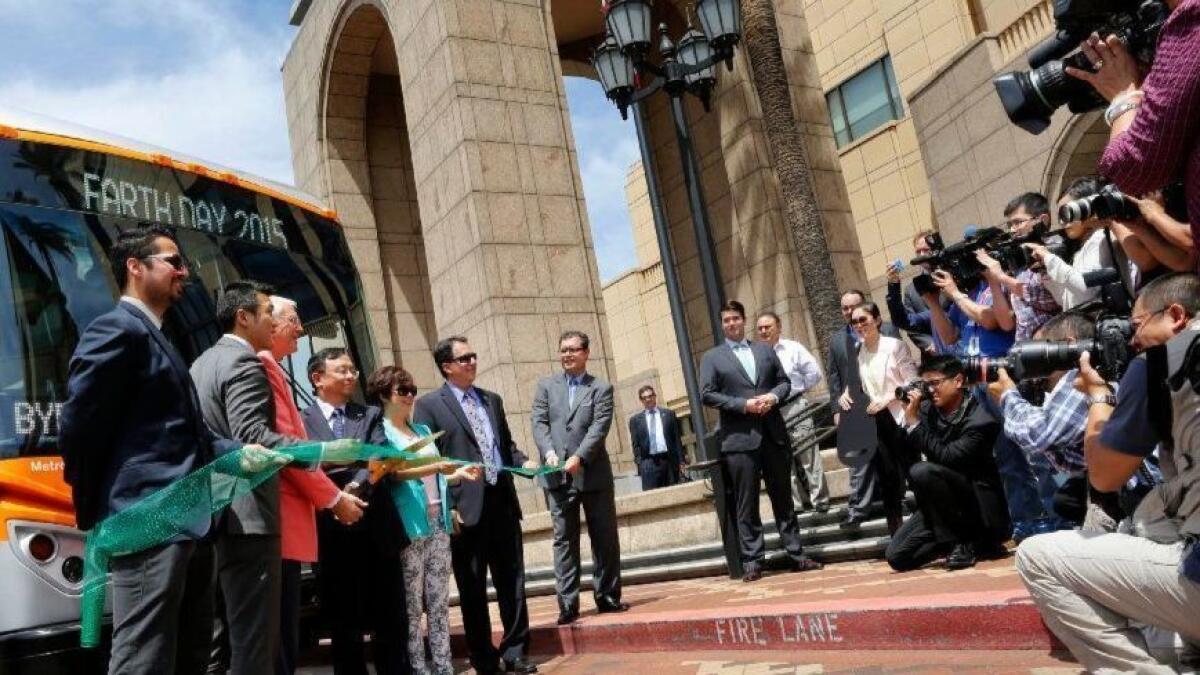
Over the next five years, Antonovich introduced or voted on multiple public initiatives that benefited BYD, including a $1.9-million grant for Lancaster’s bus agency to buy BYD buses, Metro contracts with the company and policies to convert the entire fleet to electric. In 2015, BYD and its executives made the first of what would be $13,500 in political contributions to Antonovich or his officeholder account. Antonovich has since retired from the board.
The Times found a single instance in which Antonovich declared a conflict of interest — sitting out a vote by the regional air pollution board on an $8-million grant for BYD electric trucks.
Antonovich denied having a conflict of interest otherwise. “When I voted, I was advised that it was proper to vote,” he said during a brief interview at a BYD reception before two of the company’s employees whisked him away to a back room. He refused to say who gave him that advice and did not respond to subsequent attempts to contact him.
To avoid conflicts, Metro provides directors with a list of companies affected by scheduled votes before meetings so they can check against past campaign contributions. The list for meetings on which Antonovich voted included BYD, according to copies provided to The Times. Since 1997, the state has also prohibited Metro directors from accepting more than $10 from entities doing business with the public agency.
Metro Inspector General Karen Gorman would not comment on the propriety of those donations. Through an agency spokesman, she said it was not within Metro’s jurisdiction to enforce the state contribution restriction, and that Antonovich “was no longer on the Metro board when we became aware of the contributions question.”
BYD now employs more than 700 workers in Lancaster, and the Antelope Valley Transit Authority is converting its entire fleet to BYD buses.
“When we support our local community, we’re supporting it. I don’t care how much they cost,” Lancaster Vice Mayor Marvin Crist said at a 2014 transit board meeting to buy eight electric buses, arguing BYD’s higher cost was offset by the boost to the local economy.
The purchase was thrown out a month later after objections that the decision violated state law, as it was not posted on a public agenda. Two years later, the transit agency gave a $72-million contract to electrify its entire fleet to BYD, the only company to bid.
BYD paid for Antelope Valley’s transit manager, Len Engel, to spend a week in 2016 visiting its facilities in China, on what officially was a plant inspection. Engel said he did not complete a written report from his trip, nor was he able to provide a copy of the itinerary or other documents detailing how his time was spent there. He was accompanied by six U.S. transit officials whose travel expenses also were covered by BYD. The gift was not reported as required by California ethics laws, until after The Times raised questions.
Six months after the China trip, BYD sent Engel to Ecuador for nearly a week and he gave a 15-minute speech at a three-day conference on urban development and housing. At his recommendation, BYD hired his sister-in-law to an administrative post. Engel said the relative’s hiring bought BYD no favors and that she was “absolutely qualified.”
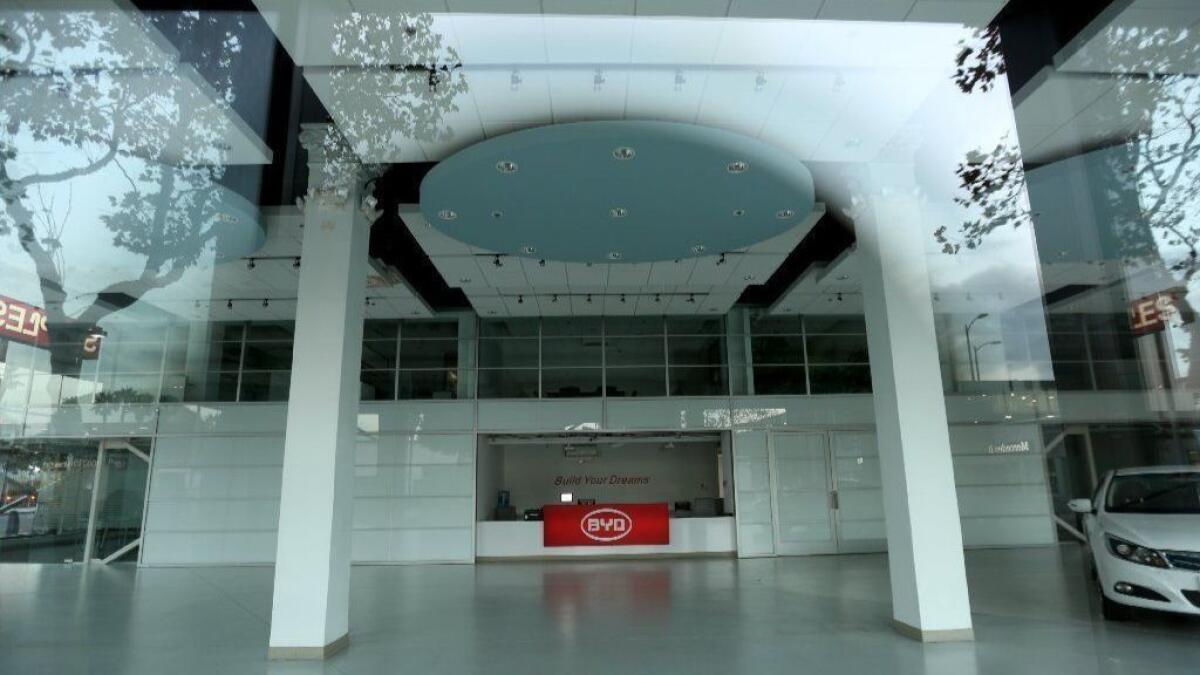
The city of Los Angeles also chased BYD’s jobs. Term sheets in city files show promises from Austin Beutner, then-Mayor Villaraigosa’s deputy in charge of business development, that went beyond leases and fleet sales to include marketing assistance from the mayor’s office and business leads for a $450-million city solar project.
Beutner, recently appointed superintendent of the Los Angeles Unified School District, did not respond to repeated interview requests concerning BYD. Villaraigosa sidestepped questions at a BYD function last fall about whether the company delivered on its promises and focused instead on what he called “the revolution.”
“Electric vehicles are the future,” Villaraigosa said.
In response to the city’s overtures, BYD laid out a five-year business plan to import more than 55,000 electric cars. It was enough to put the Chinese company at the forefront of the U.S. market. BYD later abandoned the plan as gas prices fell and consumer appetite waned.
The public market for electric buses, however, only grew.
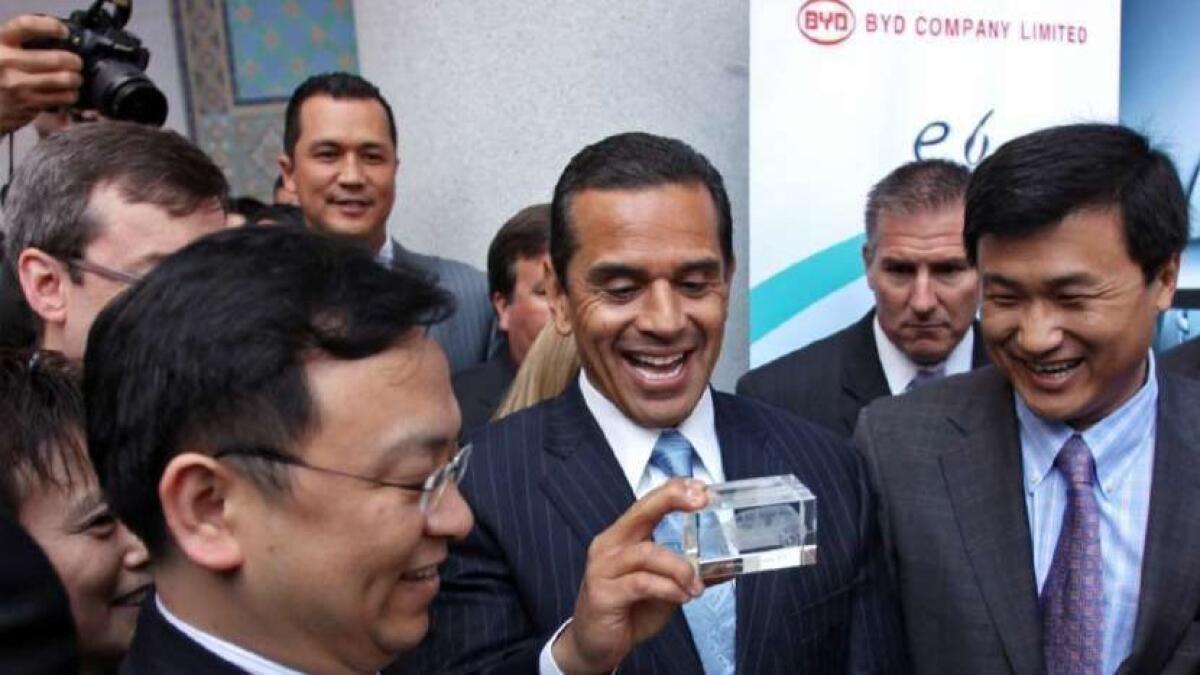
Problems from the start
On a sunny morning in spring 2015, BYD rolled out its first five buses for an Earth Day ceremony outside the Los Angeles County Metropolitan Transportation Authority headquarters.
Then the buses were quietly sent back to the factory.
Internal Metro reports show the buses required an “extensive campaign of retrofits, modifications and upgrades to correct irregularities.”
More problems arose when they returned months later to carry paying passengers for the first time, daily Metro logs show.
White smoke issued from the rear wheel of #1005. Bus #1004 wouldn’t start its second run of the day and on its next run needed a jump-start. Bus #1001 limped back to the depot when its battery dropped to 15% charge after just 68 miles, failing to complete its route. Then, logs show, #1005 stalled on the road.
That was the first 10 days.
In the following months, transit logs show the buses repeatedly stalled on city hills, including a downtown incline a little more than a mile from BYD’s Los Angeles headquarters. Once, the driver radioed that the bus was unsafe, rolling backward.
Though Metro was promised a range of 155 miles per charge, Metro records show the buses never went farther than 133 miles, and were forced back to the garage to recharge in as little as 78 miles. Factoring in breakdowns and other service interruptions, Metro reports show drivers realized no better than an average of 59 miles between charges. Most months, according to Metro records, the buses managed fewer than 400 miles between road calls, requiring emergency service or a return to the garage 10 times worse than the rest of the fleet.
According to internal Metro records, staff decided after only four months the buses were “unsuitable.” BYD offered to take them back.
BYD Senior Vice President Macy Neshati said he initiated the recall because Metro had “an obvious reticence” toward the electric buses. He rejected claims in Metro records that BYD’s buses were prone to poor quality and fell far short of the promised driving range. Instead, he said, Metro drove BYD’s buses on hills that were too steep, and drivers made unnecessary road calls. “I said I want to buy the buses back,” Neshati said. “You guys don’t want to operate them.”
Internal Metro agency records detail not just broken buses but delays for parts and staff frustration with responsiveness. In interviews with The Times and at public meetings, Metro administrators speak positively of BYD’s track record, praising the company as a “partner” and the $5-million purchase as a pilot that was never intended to remain long on the road.
The manager of Metro’s electric bus project, Steve Schupak, attributed BYD’s poor road performance to “about the most taxing of a service environment you can put a vehicle through,” a 13-mile Koreatown-to-Montebello run. “It’s a real heavy urban, stop and go, heavy-duty line,” he said.
The problems in Los Angeles were not unique.
In Anaheim, daily logs for the bus system serving Disney resorts reported repeated door and air system failures that forced the district to pick up passengers with replacement buses. In Denver, a transit spokesman said, BYD buses arrived with doors that would not open and close — a problem that persisted.
The BYD buses returned by Los Angeles went to Columbia, Mo., where transit logs show the mechanical problems continued and extended to new buses from BYD. One morning last May, passengers on a new bus with a history of issues were jolted by an explosion and a wheel fire. BYD’s Neshati blamed the explosion on heat buildup from stuck brake calipers, an issue he said is common on any bus.
Public officials in Albuquerque were so alarmed by production problems and severe range shortfalls on BYD’s newest product, a $1-million 60-foot articulated bus, that they raised concerns about its $23-million contract. Mayor Tim Keller said a nearly 100-mile gap in driving range could force the city to spend millions of dollars more on buses. “The whole thing is a bit of a lemon,” Keller said, “and now we’ve got to learn to make lemonade.”
Neshati said the Albuquerque buses are being fixed and can go the promised distance. But emails between the company and public transit agencies show cracks appeared in the bus frame during federal endurance testing last year, and BYD must now retrofit the buses it has delivered.
Would-be buyers, including L.A. Metro, Antelope Valley and Indianapolis, cannot use federal funds to pay for the buses they have ordered until it passes.
BYD regularly promotes its 40-foot buses as capable of running 155 to 180 miles on a charge, and in bid documents it told Metro that its bus “yields” 230 miles in Gardena and “is getting 250 miles” in Antelope Valley. Such performance is key to delivering the energy savings and pollution reductions BYD claims, and necessary if its buses are to replace conventional models that in Los Angeles run 385 miles between fuel stops.
Road tests and driving logs in nine cities show variability in bus range, and averages below what the company claims. Antelope Valley managers travel to transit conferences across the country touting a 180-mile range on its BYD buses, but internal logs show the initial average three years ago was 170 miles, and since December has fallen to 130. Some drivers muster less than 100 miles. In Gardena, where the district has limited further purchases, the average was below 140 miles.
Operators and consultants at Stanford University, a federal test track in Pennsylvania, and the cities of Phoenix and Long Beach also documented ranges dozens of miles below BYD’s claims. And in Long Beach, consultants said bus range dropped to 108 miles when air conditioning was used in mild weather. They warned performance could be worse in bad weather, and the bus would lose more range as its batteries degrade as much as 30%.
Experts said these issues are common to electric vehicles, and other manufacturers have contended with insurmountable hills and quality control issues at new plants. The loss of battery power over time is also inherent with the technology, as are power drains. Heaters and air conditioners can sap 20% to 50% of the power, said Rajit Gadh, director of the Smart Grid Energy Research Center at UCLA.
Battery-powered buses also require special handling by drivers and careful selection of the routes they are put on, industry experts said. Bus manufacturers are prone to touting ranges that exist only in theory, said Michael Lewis at the University of Texas at Austin’s Center of Electromechanics.
Both experts said the buses can’t be swapped for current conventional vehicles without careful planning to reduce distances, speeds and hills.
That constraint is evident in Solano County, where transit officials limited BYD’s buses to routes of 80 miles or less. After watching BYD’s bus crawl slowly up a hill, they decided to keep it off steep grades.
Soltrans operations manager Michael Abegg said his expectation is that by the time Solano’s diesel fleet is ready to retire, “the electric technology will have caught up.”
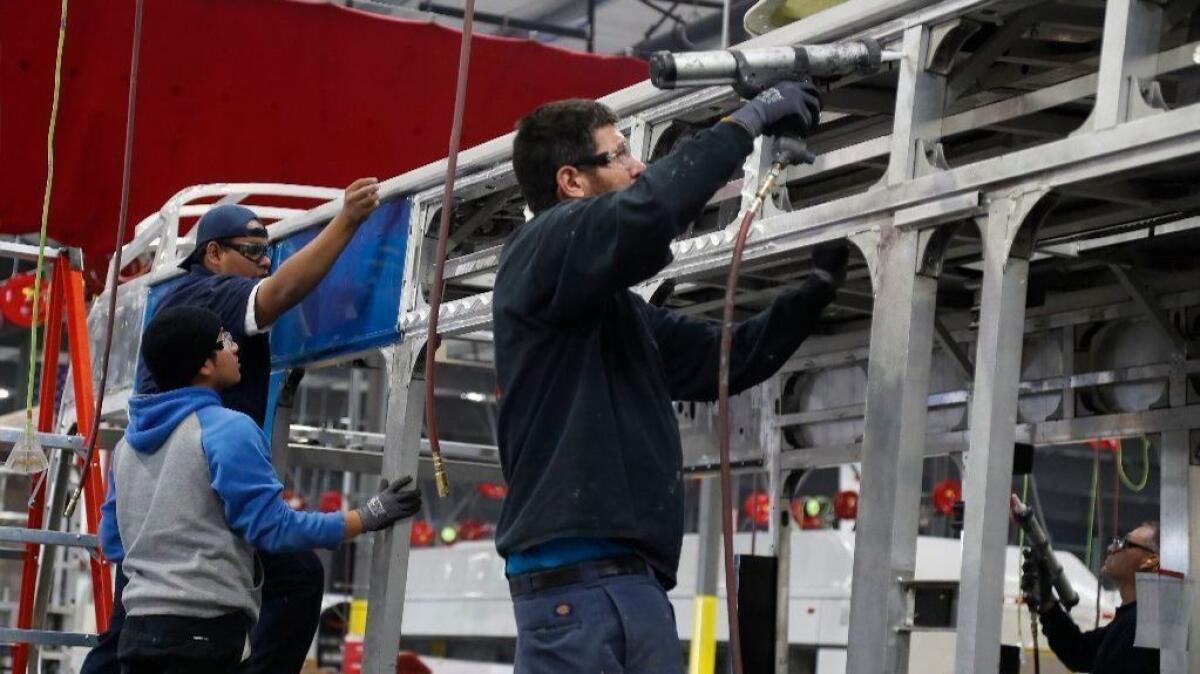
BYD flatly rejects the idea that its buses can’t simply be swapped one-for-one with diesel or natural gas. BYD’s Neshati said that objective is “what our buses need to prove, and we’re proving that in cities across the country.”
Neshati said reported mechanical problems, from doors that won’t close to buses that spontaneously kneel, are the kind of glitches common to any new delivery. He took issue with Metro transit logs showing aborted bus runs, saying transit drivers returned to their garages with power to spare.
The company provided its own analysis of Metro’s logs to calculate a theoretical range of 147 miles, less than the promised 155 but in the opinion of BYD, not significantly. To arrive at that range, though, the buses would have to be driven until their batteries were dead — a practice that would severely shorten battery life and strand buses along their routes. BYD recommends operating buses at charge levels from 85% to 15% to preserve battery life, according to a Metro contract evaluation.
Contracting documents show BYD is now conceding shorter ranges. Its most recent bid for a Metro contract still boasted extended ranges but included charging stations along bus routes to top off battery packs.
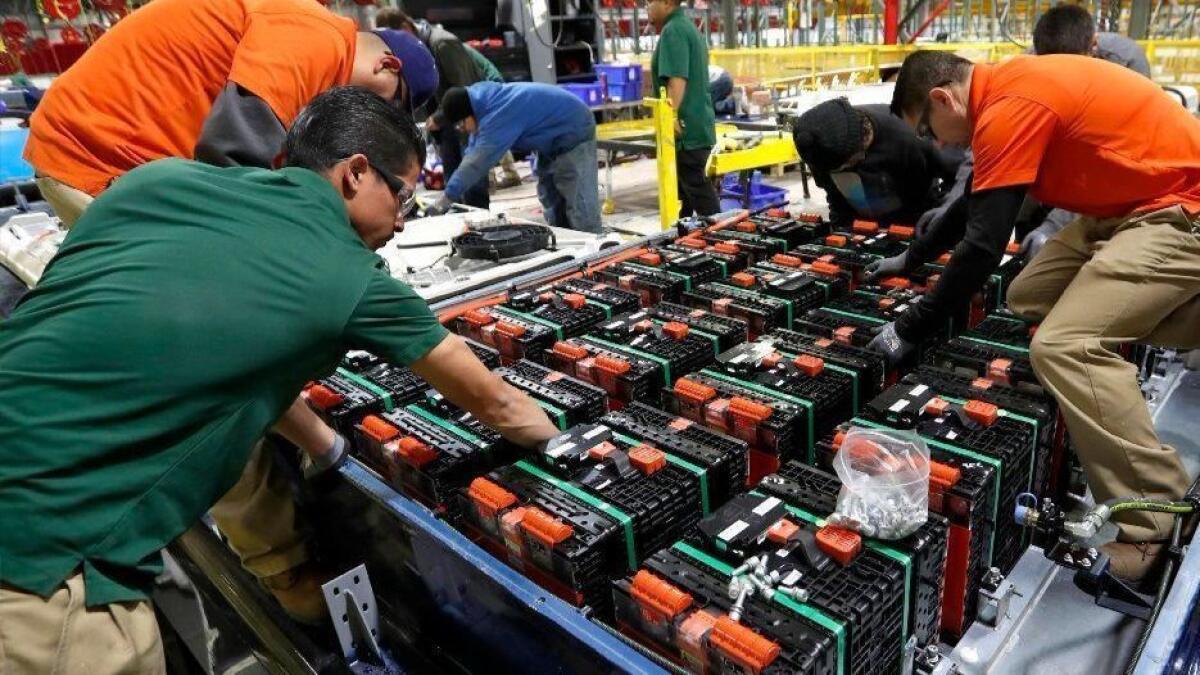
Politics and contracts
A 2016 expert report commissioned by Metro as the agency sought to ward off a state mandate for zero-emission buses concluded it will be years until battery technology is robust enough to replace conventional fleets, while currently available technology can cut most of the pollution at a tenth the cost.
BYD turned to Los Angeles Mayor Eric Garcetti’s office for help. Garcetti, chairman of Metro’s board, is an avid proponent of smog-reducing electric vehicles. The mayor and his administration invited BYD to test new product lines within city agencies, arranged for city administrators to visit the company’s factory and pushed its elevated monorail in public appearances and to Metro’s technology board.
City records show two city departments sought to give BYD contracts without competitive bidding. In both cases when the projects hit snags, agency emails show, managers told the staff that the purchases were “political,” and in one case to work around problems with the bus. The sanitation department was awaiting approval to buy an electric shuttle bus from BYD in May 2017 when The Times sought records on the purchase. The sale immediately stalled and has remained pending for nearly a year. City airport administrators last year sought to expedite a contract to BYD as the sole supplier of airfield buses, until a competitor forced public bidding. Last month the agency awarded a $23-million contract to BYD, declaring the company alone met city specifications.
The mayor’s office encouraged city departments to do business with BYD, suggesting that the airport and Metro consider a joint contract with BYD, and giving agency referrals and support to BYD sales staff. In one case, BYD included in a grant proposal it wrote for the city a commitment for Los Angeles to buy $10 million in electric garbage trucks. Agency emails show sanitation managers balked at the idea of agreeing to buy something they had not yet tested, but the promise was included anyway in the grant application the city filed with the regional air board.
Garcetti would not agree to an interview on the access and support BYD has received from his administration. In a written statement, his press office noted that though BYD representatives had more meetings with the mayor’s office than other companies, Garcetti had still at times voted to award Metro contracts to its competitors. “To be clear, access in the form of meetings and conversations does not equal business,” the statement said.
The statement also characterized Garcetti’s promotion of a BYD monorail system to carry commuters over the congested 405 Freeway as only an exploration of the concept. “Any firm is free, at any time, to submit an idea” to Metro, the statement said.
Garcetti’s staff has led the campaign for Metro to convert its 2,200-bus fleet to electric despite the poor results with BYD, authoring policy motions and setting up a private meeting between Metro executives and environmental lobbyists and pro-BYD labor unions, interviews and city records and emails show.
The board voted unanimously in support of Garcetti’s motion to electrify the fleet by 2030. However, in an email to Garcetti’s staff obtained via a public records request, an aide to Metro director John Fasana questioned the wisdom of undertaking that project “without knowing the success of the demo, the total impact or net clean air gain.”
Garcetti’s office told The Times the support is justified and that BYD has “demonstrated an improvement in the quality of their electric buses.”
Under Garcetti’s policies, Metro decided to electrify two bus routes and last year sought bids for 40-foot and 60-foot buses potentially worth more than $200 million. Staff evaluations released to The Times show that while technical issues were raised for all of the bidders, BYD’s evaluations alone included harsh criticism and skepticism that the company could follow through on its promises of improved quality and performance. The scoring sheets contained comments that BYD was “unable to clearly articulate” how it could meet Metro’s needs and that it posed the “highest risk” of failure among its competitors.
They cited “inaccurate and misleading” claims concerning BYD’s workload and “exceptionally inaccurate or unrealistic” claims of the speed in which it could build a pilot bus, and noted the company’s lack of performance data despite having delivered 39,000 electric buses, mostly in China. Some evaluators deemed major parts of BYD’s bus, including its electrical system and doors, “marginal.”
All of the evaluators ranked BYD as “unqualified” or “marginal” to meet quality and reliability requirements.
When the low scores on its 60-foot bus caused BYD to lose that $60 million sale to competitor New Flyer, BYD launched a lobbying blitz. Emails show BYD turned to Garcetti’s office for support, obtaining private meetings and tapping personal ties to the mayor. Labor leaders aligned with BYD launched attacks on its nonunion competitors. And BYD’s lobbyist focused on Metro director Ara Najarian, sending the former Glendale mayor scripted remarks urging that the contract be given to BYD, his emails show.
In a recent interview, Najarian said he led a failed effort to give the company the contract despite its poor marks due to the jobs BYD promised in Lancaster, not because of the efforts of BYD’s lobbyist, a longtime friend. Najarian said he believes BYD can overcome its production and performance problems, and that its economic engine is a valuable regional asset. It was a conviction he also expressed at a Metro board meeting in 2016, when he argued for a tempered response to the poor performance of BYD’s buses.
“What we don’t want to happen is BYD to feel that they are losing support of this agency or this county,” Najarian said at the time.
BYD came close to also losing the 40-foot contract because its initial bus design didn’t meet requirements, but Metro extended bid deadlines to allow BYD to submit a redesigned model, packing more power and with a promise that it can climb Los Angeles hills. After vowing to create 68 jobs, BYD won the $47-million contract.
None of the 65 buses Metro has ordered from BYD are yet on the road. Metro and BYD are currently designing a strategy to use bus route chargers to extend the range of the 40-foot buses approved in July. The replacement buses Metro ordered in exchange for the ones the agency returned in 2016 have yet to pass federal durability testing. There is no plan yet on how Metro will meet its self-imposed deadline to electrify the entire fleet.
Before stepping down in September as director of vehicle technology, John Drayton told directors that converting the entire fleet hinges on something yet elusive — “a bus with an honest 250-mile range.”
BYD in March told Metro’s technology board it will make that bus by the end of the year.
Times staff writer Emily Alpert Reyes contributed to this report.
Twitter: @paigestjohn
Times staff writer Cindy Chang contributed to this report.
More to Read
Sign up for Essential California
The most important California stories and recommendations in your inbox every morning.
You may occasionally receive promotional content from the Los Angeles Times.











